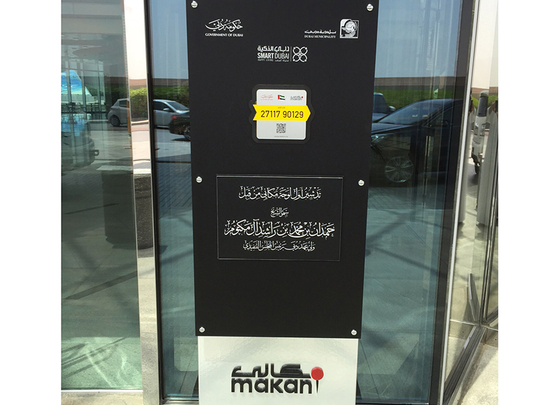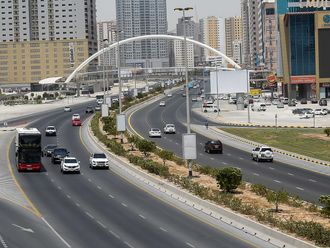
Dubai: Dubai’s own satellite location address and navigation system, Makani, will be compatible with Google and HERE maps, an official said.
Dubai Municipality’s Makani (My Location) assigns a 10-digit number to every building in Dubai on a digital map and guides users to the location — down to its front door or main entrance — using the free Makani smartphone app.
It is accurate up to one metre of the pin selected on the map.
Makani numbers are also going up on buildings, allowing residents or tourists without digital access to guide friends, taxis or emergency responders to the location.
All they have to do is say the number over the phone or text it — there is no need to give directions, street names or landmark references. The recipient simply copy pastes or punches in the number in the Makani app to see the building or location.
In the future, the building or address will be traceable on Google and HERE maps as well using the Makani number, said Abdul Hakim Abdul Kareem Malek, Director, Geographic Information System Department, Dubai Municipality.
Malek expects Google and HERE compatibility to be online by 2016, if not this year for at least one of them.
The compatibility can boost the number of people using Makani numbers and help it gain currency in everyday use, he said.
HERE maps are found in Nokia and Windows smartphones while Google maps are popular in Android and Apple mobiles.
There are millions of Google and HERE map users in Dubai and the Makani app itself has been downloaded more than 10,000 times on Google Play (the Android app store). It has a 5-star rating on the Apple store for iPhones.
The Makani app will also be available on Windows and BlackBerry smart app stores within April, Malek said.
Makani coordinates can also be converted to formats used on other location tracking systems such as DMS (Degree, Minutes, Seconds) and Latitude-Longitude within the app itself.
“Soon everyone in Dubai will start using Makani — friends, taxis, courier companies, ambulances,” he added.
The system is still new; it was officially launched on April 4 by Shaikh Hamdan Bin Mohammad Bin Rashid Al Maktoum, Crown Prince of Dubai.
However, the Makani numbers for most buildings have been available on the app for much longer than that. The physical plates are being rolled out and expect to be in place for all buildings within six months.
There are around 125,000 buildings in Dubai that will be registered with Makani.
Virtually all buildings recently received Makani number stickers and guides to build awareness on the system. The stickers, sometimes found in reception areas or next to lifts, will be replaced by permanent Makani plates on front entrances.
“Seeing is believing and the plates will help introduce a culture of change in how we give and use addresses.”
With Makani, the problem of language, accent or pronunciation differences does not arise.
The plates can also be scanned by smartphones using the QR code reader apps, providing a digital copy of the number that can be quickly shared online.
“Makani is a first of its kind system in the world. It’s getting great feedback and everyone will be forced — in a positive sense of the word — to use it,” Malek said.
He added that he has met Emirates Post officials who have shown interest in Makani and praised the advantages of the system during a presentation. “It’s their decision if they want to use it. They are happy with it.”
Malek added that he anticipates Dubai taxi operators will use Makani by the end of the year. “Already some taxi drivers are using it of their own accord,” he said.
Makani can also be used online through its website, makani.ae.
Malek had earlier said there is a plan to integrate other services with Makani, such as displaying the location’s contact information, services and nearby facilities, possibly using Augmented Reality features on smartphones.












